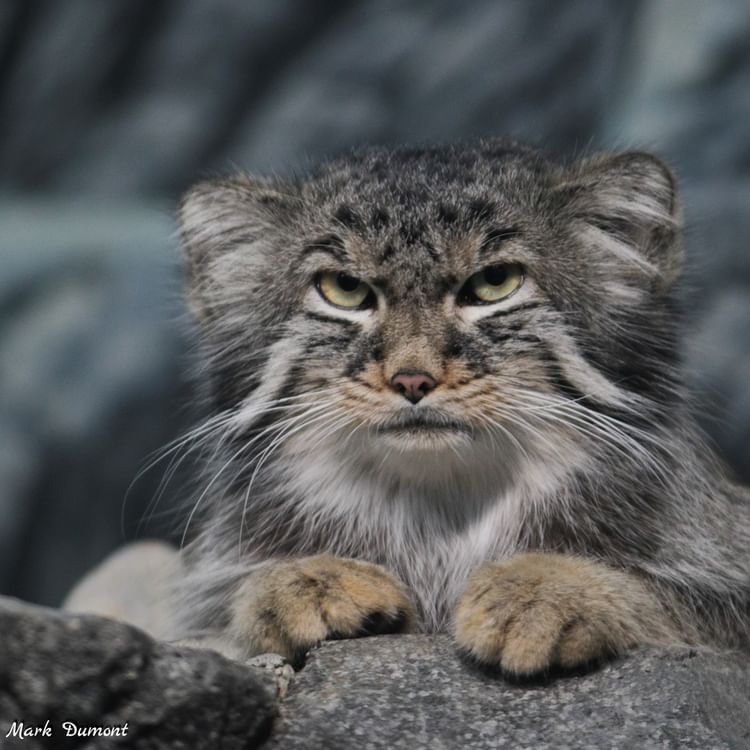Greetings, cat aficionados and wildlife enthusiasts! Today, we’re delving into the mysterious world of Pallas cats – the wild feline wonders that are sure to make you go “aww” with their irresistible charm. So, strap in and let’s uncover the secrets of these captivating, camouflaged creatures.
Imagine yourself trekking through the rugged terrains of Central Asia, and suddenly, you spot a small, fluffy feline with an intense, piercing gaze. Congratulations, you’ve just encountered the elusive Pallas cat! Also known as “manul,” these small wildcats inhabit the rocky steppes and grasslands of countries like Mongolia, China, and Russia.
Now, let’s talk about their appearance. Pallas cats boast a coat of long, dense fur, which not only keeps them warm in their harsh, chilly habitat but also helps them blend seamlessly into their surroundings. Sporting a round face, wide-set eyes, and short, stocky legs, these feline wonders look like the perfect blend of a wildcat and a plush toy.
You might be curious about their behavior, and trust me, it’s just as fascinating as their looks. Pallas cats are solitary creatures and highly skilled hunters. Their prey of choice? Pikas and other small mammals. These stealthy felines rely on their incredible camouflage and patience, stalking their prey before launching a swift, surprise attack.
Though they may look cuddly, it’s essential to remember that Pallas cats are wild animals, not domesticated pets. In fact, their survival in the wild depends on their ability to avoid humans and other potential threats. Pallas cats are crepuscular, meaning they’re most active during dawn and dusk when the chances of encountering humans are low.
Here’s a fun fact: Pallas cats have some peculiar adaptations that set them apart from other felines. For instance, they have circular pupils rather than the typical slit-like pupils seen in most wildcats. This unique feature allows them to better judge distances and focus on their prey in the low light conditions of their preferred hunting times.
If you’re wondering where you can witness the beauty of these enigmatic creatures without venturing into their remote habitats, you’re in luck! Many zoos and wildlife parks worldwide provide a home for Pallas cats, enabling visitors to admire them up close. These institutions also contribute to vital conservation efforts, as Pallas cat populations face threats like habitat loss and poaching.
Now, let’s wrap things up with a lesser-known tidbit about these secretive felines. Pallas cats have an extraordinary vocal range, capable of producing a wide array of sounds, from hisses and growls to purrs and meows. These vocalizations help them communicate with one another and express their emotions – a secret language known only to their kind.
There you have it – the enigmatic world of Pallas cats! These captivating, fluffy felines are a true testament to the wonders of the animal kingdom. Next time you visit a zoo or wildlife park, keep an eye out for these elusive cats and share your newfound knowledge with fellow animal enthusiasts. Happy Pallas cat spotting!


